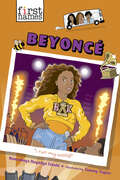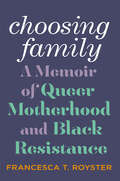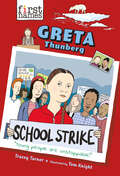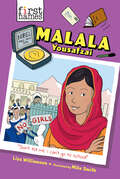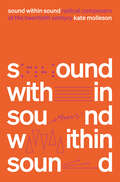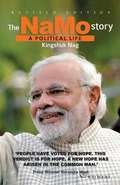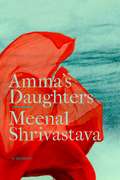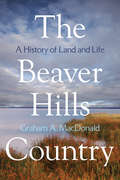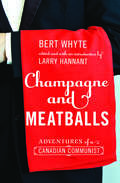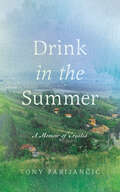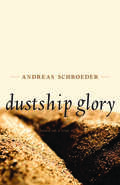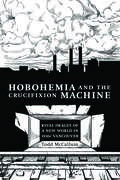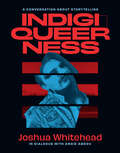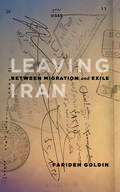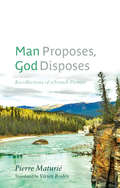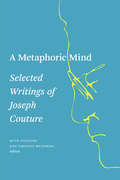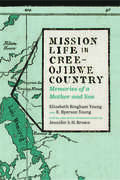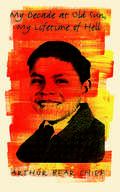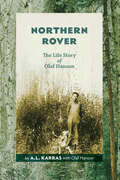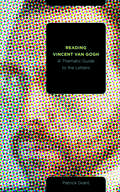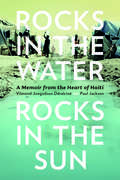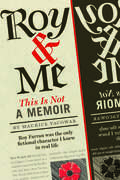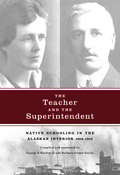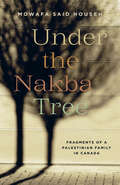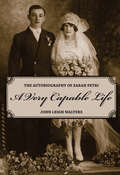- Table View
- List View
Beyoncé (First Names)
by Nansubuga Nagadya IsdahlMeet the woman who changed music forever and showed that girls can run the world! Before she was an international superstar and feminist icon, Beyoncé was a girl from Texas who loved to sing and dance. As a member of Destiny’s Child, she climbed the charts and became a member of one of the most famous girl groups in history. This launched Beyoncé into her solo career, and since then, she’s become an unstoppable force in music and pop culture. Beyond music, she is a successful businesswoman and activist who helps bring issues of race and gender into the global conversation. Empowering and inspirational, Beyoncé tells the story of the woman who showed that girls can run the world. It includes a timeline, glossary, and index. First Names is a highly illustrated nonfiction series that puts readers on a first-name basis with some of the most incredible people in history and of today!
Choosing Family: A Memoir of Queer Motherhood and Black Resistance
by Francesca T. RoysterChoosing Family: A Memoir of Queer Motherhood and Black Resistance is a brilliant literary memoir of chosen family and chosen heritage, told against the backdrop of Chicago’s North and South Sides. As a multiracial household in Chicago’s North Side community of Rogers Park, race is at the core of Francesca T. Royster and her family’s world, influencing everyday acts of parenting and the conception of what family truly means. Like Maggie Nelson’s The Argonauts, this lyrical and affecting memoir focuses on a unit of three: the author; her wife, Annie, who’s white; and Cecilia, the Black daughter they adopt as a couple in their 40s and 50s. Choosing Family chronicles this journey to motherhood while examining the messiness and complexity of adoption and parenthood from a Black, queer, and feminist perspective. Royster also explores her memories of the matriarchs of her childhood and the homes these women created in Chicago’s South Side—itself a dynamic character in the memoir—where “family” was fluid, inclusive, and not necessarily defined by marriage or other socially recognized contracts. Calling upon the work of some of her favorite queer thinkers, including José Esteban Muñoz and Audre Lorde, Royster interweaves her experiences and memories with queer and gender theory to argue that many Black families, certainly her own, have historically had a “queer” attitude toward family: configurations that sit outside the white normative experience and are the richer for their flexibility and generosity of spirit. A powerful, genre-bending memoir of family, identity, and acceptance, Choosing Family, ultimately, is about joy—about claiming the joy that society did not intend to assign to you, or to those like you.
Greta Thunberg (First Names)
by Tracey TurnerIn author Tracey Turner and illustrator Tom Knight’s Greta Thunberg, a biography in the First Names series, meet the young Swedish activist who is standing up to climate change! Before she was a well-known environmentalist activist, Greta Thunberg was just a girl living in Stockholm, Sweden. She first heard about climate change when she was only eight years old, and she couldn’t understand why no one seemed to be doing anything about it. When she was 15 years old, she began spending her days outside the Swedish Parliament to call for action on climate change. She’d sit outside the whole school day with a sign that read “School strike for climate.” Soon, other students began to follow Greta’s lead and participate in similar protests, and together, these kids organized the Fridays for Future climate strike movement. Greta also is an inspiration to many because she has Asperger’s Syndrome and is very open in talking about her diagnosis, further destigmatizing it. Today, Greta continues to fight for climate change—and continues to prove that you’re never too young to make a difference! First Names is a highly illustrated nonfiction series that puts readers on a first-name basis with some of the most incredible people in history and of today! The First Names series:Harry HoudiniAmelia EarhartAda LovelaceMalala YousafzaiFerdinand MagellanBeyoncé Nelson MandelaGreta Thunberg
Malala Yousafzai (First Names)
by Lisa WilliamsonMeet the young activist who stood up for her rights—and changed millions of lives Before Malala Yousafzai (b. 1997) became the youngest Nobel Prize laureate, she was a girl fighting for her education in Pakistan. Growing up, Malala’s father encouraged her to be politically active and speak out about her educational rights. When she did, she was shot by a member of the Taliban and the story received worldwide media coverage. Protests and petitions from around the world helped to pass an educational-rights bill in Pakistan, and Malala used this platform to continue her activism and fight for women’s rights. Inspiring and moving, Malala Yousafzai tells the story of one girl’s bravery in her fight for equal rights. It includes a timeline, bibliography, glossary, and index.
Sound Within Sound: Radical Composers of the Twentieth Century
by Kate MollesonSound Within Sound presents an alternative history of 20th-century composers—nearly all of them women or composers of color—by a leading international music critic. Think of a composer right now. Was it a white man? Perhaps in old-fashioned clothing and wild hair? The music history we’re taught is one dominated by men, and even then, only a select few enter the zeitgeist. This conventional history perpetuates the myth of “great works” created by “genius” artists. Men who enjoyed institutional privilege during their lifetimes and have since been enshrined by an industry of publishers and record labels. But just because we haven’t heard of spectacular female composers doesn’t mean they weren’t creating music all the same. Profiling a dozen pioneering 20th-century composers—including American modernist Ruth Crawford Seeger (mother of Pete and Peggy Seeger), French electronic artist Éliane Radigue, Soviet visionary Galina Ustvolskaya, and Ethiopian pianist Emahoy Tsegué-Maryam Guèbrou—acclaimed journalist and BBC broadcaster Kate Molleson reexamines the canon while bringing to life largely forgotten sonic revolutionaries whose dramatic lives and bursts of creativity played out against a backdrop of seismic geopolitical and social change. These composers, working at a remove from London, Paris, Vienna, and New York, were sidelined and ignored for systemic, structural reasons. This is a landmark alternative history of 20th-century composers; a radical, new, and truly global work of revisionist history. It is a campaigning book that challenges the status quo while introducing you to a world of groundbreaking music. Includes Black-and-White Photographs
The Namo Story: A Political Life
by Kingshuk NagOne of the truly enigmatic personalities on the contemporary Indian political canvas, Narendra Damodardas Modi is difficult to ignore. <P><P>From his humble beginnings as a RSS pracharak to his rise in the Hindutva ranks, and from being Bharatiya Janata Party's master planner to one of the its most popular and controversial state chief ministers, Modi's mantra of change and development is gradually finding many takers. Though he evokes vastly different reactions among the citizens for his alleged role during the Godhra aftermath, what is absolutely clear is that he indeed is racing towards the centre stage, making the 2014 General Elections look more like a Presidential system - where, you either vote for him or against him. And that, as they say, is the Modi effect. Kingshuk Nag paints the most vivid portrait of the extraordinary politician who is poised to take on a new role in the coming years.
Amma's Daughters: A Memoir (Our Lives: Diary, Memoir, and Letters)
by Meenal ShrivastavaAs a precocious young girl, Surekha knew very little about the details of her mother Amma’s unusual past and that of Babu, her mysterious and sometimes absent father. The tense, uncertain family life created by her parents’ distant and fractious marriage and their separate ambitions informs her every action and emotion. Then one evening, in a moment of uncharacteristic transparency and vulnerability, Amma tells Surekha and her older sister Didi of the family tragedy that changed the course of her life. Finally, her daughters begin to understand the source of their mother’s deep commitment to the Indian nationalist movement and her seemingly unending willingness to sacrifice in the name of that pursuit. In this re-memory based on the published and unpublished work of Amma and Surekha, Meenal Shrivastava, Surekha’s daughter, uncovers the history of the female foot soldiers of Gandhi’s national movement in the early twentieth century. As Meenal weaves these written accounts together with archival research and family history, she gives voice and honour to the hundreds of thousands of largely forgotten or unacknowledged women who, threatened with imprisonment for treason and sedition, relentlessly and selflessly gave toward the revolution.
Champagne and Meatballs: Adventures of a Canadian Communist
by Bert Whyte Larry HannantActive for over forty years with the Communist Party of Canada, Bert Whyte was a journalist, an underground party organizer and soldier during World War II, and a press correspondent in Beijing and Moscow. But any notion of him as a Communist party hack would be mistaken. Whyte never let leftist ideology get in the way of a great yarn. In Champagne and Meatballs — a memoir written not long before his death in Moscow in 1984 — we meet a cigar-smoking rogue who was at least as happy at a pool hall as at a political meeting. His stories of bumming across Canada in the 1930s, of combat and camaraderie at the front lines in World War II, and of surviving as a dissident in troubled times make for compelling reading. The manuscript of Champagne and Meatballs was brought to light and edited by historian Larry Hannant, who has written a fascinating and thought-provoking introduction to the text. Brash, irreverent, informative, and entertaining, Whyte's tale is history and biography accompanied by a wink of his eye.
Drink in the Summer: A Memoir of Croatia (Our Lives: Diary, Memoir, and Letters)
by Tony FabijančićSince childhood, Tony Fabijančić has travelled frequently to Yugoslavia and Croatia, the homeland of his father. He spent time with his peasant family in the village of Srebrnjak in the north and escaped to the Adriatic islands in the south where he could break free from the constraints of everyday life. Those two worlds—the north, marked by the haunting saga of family life, its history and material practices, and the south, a place defined by travel and escape—formed the two halves of Fabijančić’s Croatian life. Over time, he observed Srebrnjak become a white-collar weekend retreat, the community of peasants of the 1970s, to which he was first introduced, only a distant memory. From the continental interior of green valleys and plum orchards to the austere and skeletal karst coast, Drink in the Summer is a unique record of a place and people now lost to time, a description of a country’s varied landscapes, and a journey of discovery, freedom, beauty, and love.
Dustship Glory
by Andreas Schroeder Don KerrIn this new edition of a prairie classic, Andreas Schroeder fictionalizes the true story of Tom Sukanen's wild scheme to build an ocean-going ship in the middle of a wheat field in Saskatchewan. Set during the hardships of the "Dirty Thirties," Dustship Glory presents us with Sukanen's mythic effort to escape both the drought and pestilence of his time, as well as his own personal struggle to be free. Featuring an illuminating foreword by beloved Saskatoon writer Don Kerr, Dustship Glory will provide Canadian and international audiences alike with the opportunity to reacquaint themselves with the dramatic tale of a ship that still stands in the fields south of Moose Jaw in Saskatchewan.
Hobohemia and the Crucifixion Machine: Rival Images of a New World in 1930s Vancouver
by Todd MccallumIn the early years of the Great Depression, thousands of unemployed homeless transients settled into Vancouver’s “hobo jungle.” The jungle operated as a distinct community, in which goods were exchanged and shared directly, without benefit of currency. The organization of life was immediate and consensual, conducted in the absence of capital accumulation. But as the transients moved from the jungles to the city, they made innumerable demands on Vancouver’s Relief Department, consuming financial resources at a rate that threatened the city with bankruptcy. In response, the municipality instituted a card-control system—no longer offering relief recipients currency to do with as they chose. It also implemented new investigative and assessment procedures, including office spies, to weed out organizational inefficiencies. McCallum argues that, threatened by this “ungovernable society,” Vancouver’s Relief Department employed Fordist management methods that ultimately stripped the transients of their individuality. Vancouver’s municipal government entered into contractual relationships with dozens of private businesses, tendering bids for meals in much the same fashion as for printing jobs and construction projects. As a result, entrepreneurs clamoured to get their share of the state spending. With the emergence of work relief camps, the provincial government harnessed the only currency that homeless men possessed: their muscle. This new form of unfree labour aided the province in developing its tourist driven “image” economy, as well as facilitating the transportation of natural resources and manufactured goods. It also led eventually to the most significant protest movement of 1930s’ Canada, the On-to-Ottawa Trek. Hobohemia and the Crucifixion Machine explores the connections between the history of transiency and that of Fordism, offering a new interpretation of the economic and political crises that wracked Canada in the early years of the Great Depression.
Indigiqueerness: A Conversation about Storytelling
by Joshua WhiteheadEvolving from a conversation between Joshua Whitehead and Angie Abdou, Indigiqueerness is part dialogue, part collage, and part memoir. Beginning with memories of his childhood poetry and prose and travelling through the library of his life, Whitehead contemplates the role of theory, Indigenous language, queerness, and fantastical worlds in all his artistic pursuits. This volume is imbued with Whitehead’s energy and celebrates Indigenous writers and creators who defy expectations and transcend genres.
Leaving Iran: Between Migration and Exile
by Goldin FaridehIn 1976, at the age of twenty-three, Farideh Goldin left Iran in search of her imagined America. She sought an escape from the suffocation she felt under the cultural rules of her country and the future her family had envisioned for her. While she settled uneasily into American life, the political unrest in Iran intensified and in February of 1979, Farideh’s family was forced to flee Iran on the last El-Al flights to Tel Aviv. They arrived in Israel as refugees, having left everything behind including the only home Farideh’s father had ever known. Baba, as Farideh called her father, was a well-respected son of the chief rabbi and dayan of the Jews of Shiraz. During his last visit to the United States in 2006, he handed Farideh his memoir that chronicled the years of his life after exile: the confiscation of his passport while he attempted to return to Iran for his belongings, the resulting years of loneliness as he struggled against a hostile bureaucracy to return to his wife and family in Israel, and the eventual loss of the poultry farm that had supported his family. Farideh translated her father’s memoir along with other documents she found in a briefcase after his death. Leaving Iran knits together her father’s story of dislocation and loss with her own experience as an Iranian Jew in a newly adopted home. As an intimate portrait of displacement and the construction of identity, as a story of family loyalty and cultural memory, Leaving Iran is an important addition to a growing body of Iranian–American narratives.
Man Proposes, God Disposes: Recollections of a French Pioneer
by Pierre Maturié Vivien Bosley Robert WardhaughIn 1910, young Pierre Maturié bid farewell to his comfortable bourgeois existence in rural France and travelled to northern Alberta in search of independence, adventure, and newfound prosperity. Some sixty years later, he wrote of the four years he spent in Canada before he returned to France in 1914 to fight in the First World War. Like that of so many youthful pioneers, his story is one of adventure and hardship—perilous journeys, railroad construction in the Rockies, panning for gold in swift-flowing streams, transporting goods for the Hudson’s Bay Company along the Athabasca River. Blessed with the rare gift of a natural storyteller, Maturié conveys his abiding nostalgia for a country he loved deeply yet ultimately had to abandon. Maturié’s memoir, Man Proposes, God Disposes, appeared in France in 1972, to a warm reception. Now, in the deft and marvellously empathetic translation of Vivien Bosley, it is at long last available in English. As a portrait of pioneer life in northern Alberta, as a window onto the French experience in Canada, and, above all, as an irresistible story—it will continue to find a place in the hearts of readers for years to come.
A Metaphoric Mind: Selected Writings of Joseph Couture
by Ruth Couture Virginia McgowanDr. Joseph Couture (1930–2007), known affectionately as "Dr. Joe," stood at the centre of some of the greatest political, social, and intellectual struggles of Aboriginal peoples in contemporary Canada. A profound thinker and writer, as well as a gifted orator, he easily walked two paths, as a respected Elder and traditional healer and as an educational psychologist, one of the first Aboriginal people in Canada to receive a PhD. His work challenged and transformed long-held views of Canada's Indigenous peoples, and his vision and leadership gave direction to many of the current fields of Aboriginal scholarship. His influence extended into numerous areas—education, addictions and mental health treatment, community development, restorative justice, and federal correctional programming for Aboriginal peoples. With a foreword by Lewis Cardinal, A Metaphoric Mind brings together for the first time key works selected from among Dr. Joe's writings, published and unpublished. Spanning nearly thirty years, the essays invite us to share in his transformative legacy through a series of encounters, with Aboriginal spirituality and ancestral ways of knowing, with Elders and their teachings, with education and its role in politicization, self-determination, and social change, and with the restorative process and the meaning of Native healing.
Mission Life in Cree-Ojibwe Country: Memories of a Mother and Son
by Elizabeth Bingham Young E. Ryerson Young Jennifer S. BrownIn May of 1868, Elizabeth Bingham Young and her new husband, Egerton Ryerson Young, began a long journey from Hamilton, Ontario, to the Methodist mission of Rossville. For the next eight years, Elizabeth supported her husband’s work at two mission houses, Norway House and then Berens River. Unprepared for the difficult conditions and the “eight months long” winter, and unimpressed with “eating fish twenty-one times a week,” the young Upper Canada wife rose to the challenge. In these remote outposts, she gave birth to three children, acted as a nurse and doctor, and applied both perseverance and determination to learning Cree, while also coping with poverty and short supplies within her community. Her account of mission life, as seen through the eyes of a woman, is the first of its kind to be archived and now to appear in print. Accompanying Elizabeth’s memoir, and offering a counterpoint to it, are the reminiscences of her eldest son, “Eddie.” Born at Norway House in 1869 and nursed by a Cree woman from infancy, Eddie was immersed in local Cree and Ojibwe life, culture, and language, in many ways exemplifying the process of reverse acculturation often in evidence among the children of missionaries. Like those of his mother, Eddie’s memories capture the sensory and emotional texture of mission life, providing a portrait that is startling in its immediacy. Skillfully woven together and meticulously annotated by Jennifer Brown, these two remarkable recollections of mission life are an invaluable addition to the fields of religious, missionary, and Aboriginal history. In their power to resurrect experience, they are also a fascination to read.
My Decade at Old Sun, My Lifetime of Hell
by Arthur Bear Chief Frits Pannekoek Judy BedfordArthur Bear Chief suffered both sexual and psychological abuse during his time at Old Sun Residential school in Gleichen on the Siksika Nation. My Decade at Old Sun, My Lifetime of Hell is a of chronological vignettes that depict the punishment, cruelty, and injustice that Arthur endured at Old Sun and then later relived in the traumatic process of retelling his story in connection with a complicated claims procedure. Late in life, after working for both the provincial and federal government, Arthur returned home to Gleichen. It was there that he began to reconnect with Blackfoot language and culture and to write his story.
Northern Rover: The Life Story of Olaf Hanson
by A. L. Karras Olaf HansonFrom 1919 to 1970, Olaf Hanson was a trapper, fur trader, prospector, game guardian, fisherman, and road blasting expert in northeastern Saskatchewan. He told his life story to popular Saskatchewan author A. L. Karras, who wrote this historical memoir in the 1980s. In an uncompromising, straightforward style, Karras and Hanson reveal the geography, wildlife, and natural history of the region as well as the business and social interactions between people. Northern Rover offers a look at the vanishing subsistence and commercial economy of the boreal forest, wound around a fascinating personal story of courage and physical stamina.
Reading Vincent van Gogh: A Thematic Guide to the Letters
by Patrick GrantSoon after his death, Vincent van Gogh’s reputation grew and developed through the remarkably symbiotic relationship evident between his paintings and letters. However, the sheer bulk and complexity of Van Gogh’s complete surviving correspondence presents a formidable challenge to those who wish to read and analyze the whole text as a literary work. Reading Vincent van Gogh is at once an interpretive guide to Van Gogh’s letters and a distillation of the key themes that reoccur throughout his collected letters—foremost among them the motifs of suffering, love, imagination, and the ineffable. In this indispensable, synoptic view of the letters, Patrick Grant makes the main lines of Vincent van Gogh’s thinking accessible and displays the arresting vividness of the well-known artist’s writing.
Rocks in the Water, Rocks in the Sun: A Memoir from the Heart of Haiti
by Paul Jackson Vilmond Joegodson DéralcinéWhen Joegodson Déralciné was still a small child, his parents left rural Haiti to resettle in the rapidly growing zones of Port-au-Prince. As his family entered the city in 1986, Duvalier and his dictatorship exited. Haitians, once terrorized under Duvalier’s reign, were liberated and emboldened to believe that they could take control of their lives. But how? Joining hundreds of thousands of other peasants trying to adjust to urban life, Joegodson and his family sought work and a means of survival. But all they found was low-waged assembly plant jobs of the sort to which the repressive Duvalier regime had opened Haiti’s doors—the combination of flexible capital and cheap labour too attractive to multinational manufacturers to be overlooked. With the death of his mother, Joegodson was placed in his uncle’s care, and so began a childhood of starvation, endless labour, and abuse. In honest, reflective prose, Joegodson—now a father himself— allows us to walk in the ditches of Cité Soleil, to hide from the macoutes under the bed, to feel the ache of an empty stomach. But, most importantly, he provides an account of life in Haiti from a perspective that is rarely heard. Free of sentimentality and hackneyed clichés, his narrative explores the spirituality of Vodou, Catholicism, and Protestantism, describes the harrowing day of the 2010 earthquake and its aftermath, and illustrates the inner workings of MINUSTAH. Written with Canadian historian Paul Jackson—Joegodson telling his story in Creole, Jackson translating, the two of them then reviewing and reworking—the memoir is a true collaboration, the struggle of two people from different lands and vastly different circumstances to arrive at a place of mutual understanding. In the process, they have given us an unforgettable account of a country determined to survive, and on its own terms.
Roy & Me: This Is Not a Memoir
by Maurice YacowarMaurice Yacowar challenges genre and form in Roy & Me, a cross between memoir and fiction, truth and distortion. It is the exploration of Yacowar’s relationship with Roy Farran—soldier, politician, author, mentor—and his conflict with Farran’s anti-Semitic past.Best known for his service with the British Special Air Service during World War II, Roy Farran served as a politician in the Legislative Assembly of Alberta for Premier Peter Lougheed. During his time in Israel as a soldier, Farran allegedly kidnapped and murdered a sixteen-year-old member of the Lehi group, also known as the Stern Gang.Roy & Me is a memoir that edges toward fiction by venturing into Roy Farran’s thoughts, drawing simultaneously on his writings and Yacowar’s own imagination.
The Teacher and the Superintendent: Native Schooling in the Alaskan Interior, 1904-1918
by Barbara Grigor-Taylor George E. Boulter IIFrom its inception in 1885, the Alaska School Service was charged with the assimilation of Alaskan Native children into mainstream American values and ways of life. Working in the missions and schools along the Yukon River were George E. Boulter and Alice Green, his future wife. Boulter, a Londoner originally drawn to the Klondike, had begun teaching in 1905 and by 1910 had been promoted to superintendent of schools for the Upper Yukon District. In 1907, Green left a comfortable family life in New Orleans to answer the “call to serve” in the Episcopal mission boarding schools for Native children at Anvik and Nenana, where she occupied the position of government teacher. As school superintendent, Boulter wrote frequently to his superiors in Seattle and Washington, DC, to discuss numerous administrative matters and to report on problems and conditions overall.From 1906 to 1918, Green kept a personal journal—hitherto in private possession—in which she reflected on her professional duties and her domestic life in Alaska. Collected in The Teacher and the Superintendent are Boulter’s letters and Green’s diary. Together, their vivid, first- hand impressions bespeak the earnest but paternalistic beliefs of those who lived and worked in immensely isolated regions, seeking to bring Christianity and “civilized” values to the Native children in their care. Beyond shedding private light on the missionary spirit, however, Boulter and Green have also left us an invaluable account of the daily conflicts that occurred between church and government and of the many injustices suffered by the Native population in the face of the misguided efforts of both institutions..
Under the Nakba Tree: Fragments of a Palestinian Family in Canada (Our Lives: Diary, Memoir, and Letters)
by Mowafa Said HousehMowafa Said Househ’s family fled Palestine in 1948 and arrived in Canada in the 1970s. He spent his childhood in Edmonton, Alberta, where he grew up as a visible minority and a Muslim whose family had a deeply fractured history. In the year 2000, when Mowafa visited his family’s homeland of Palestine at the beginning of the Second Intifada, he witnessed the effects of prolonged conflict and occupation. It was those observations and that experience that inspired him not only to tell his story but to realize many of the intergenerational and colonial traumas that he shares with the Indigenous people of Turtle Island. His moving memoir depicts the lives of those who live on occupied land and the struggles that define them.
A Very Capable Life: The Autobiography of Zarah Petri
by John Leigh WaltersWritten in his mother’s unique voice, John Leigh Walters pushes the boundaries of memoir in A Very Capable Life, the extraordinary journey of a seemingly ordinary woman.Zarah Petri was a child when her family left Hungary to establish a new life in Canada in the 1920s. With courage and innovation, Zarah and her family survived the Depression?even if it meant breaking the law to do so. In celebrating Zarah Petri, A Very Capable Life pays homage to all “ordinary” women of the early twentieth century who challenged society’s conventions for the sake of survival.
